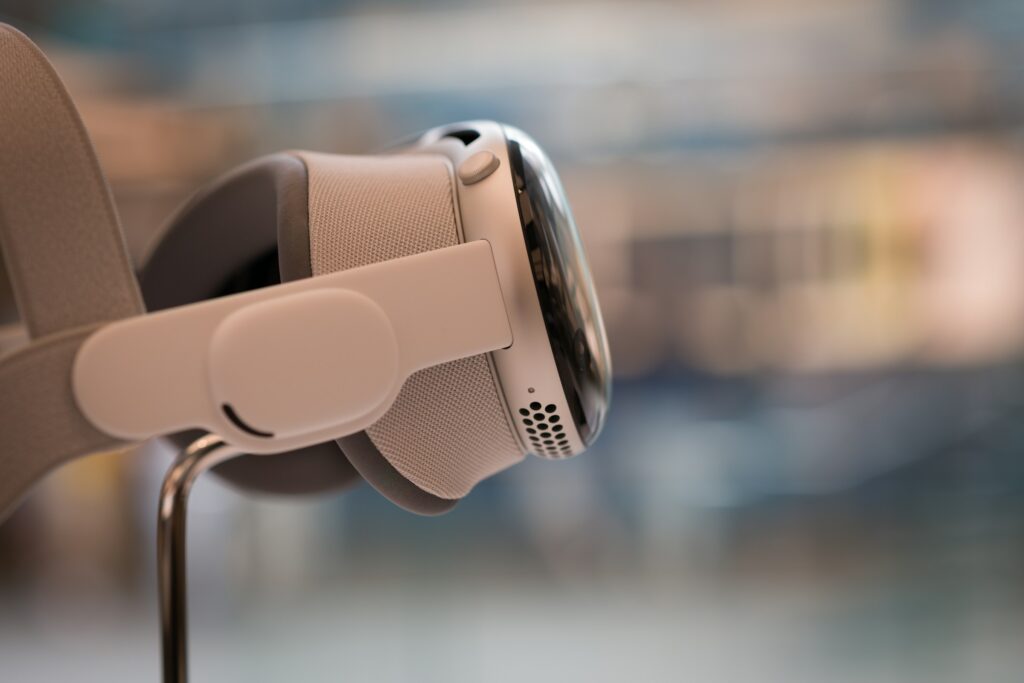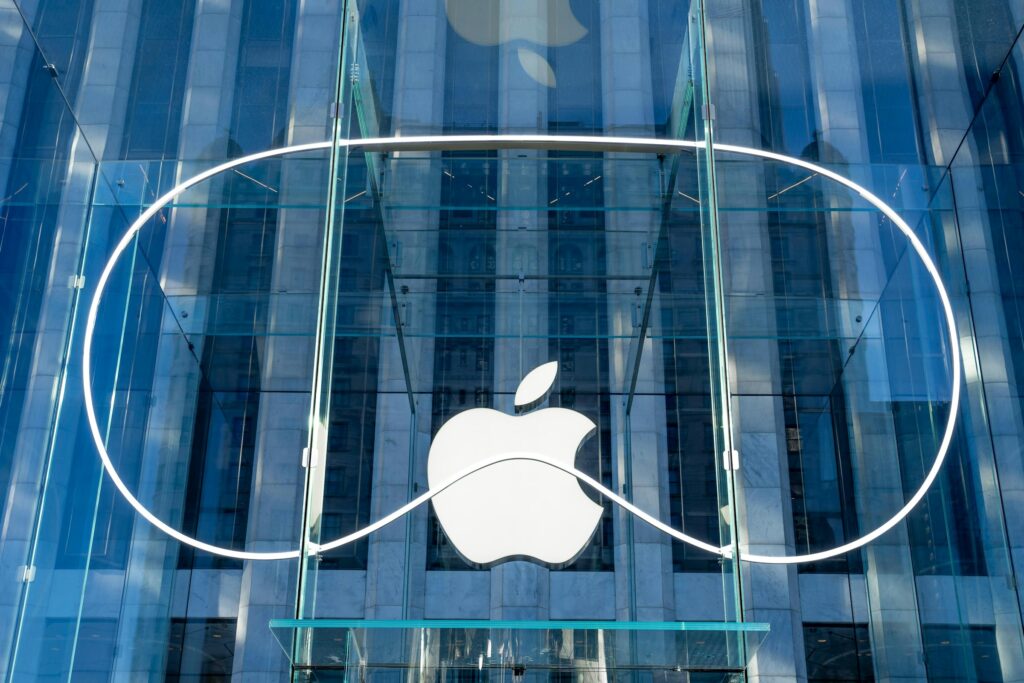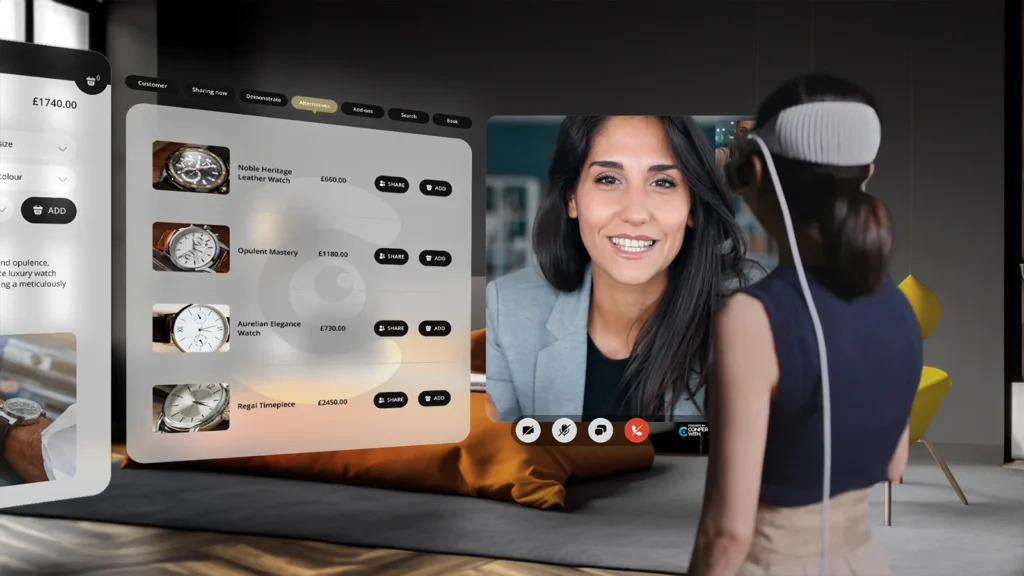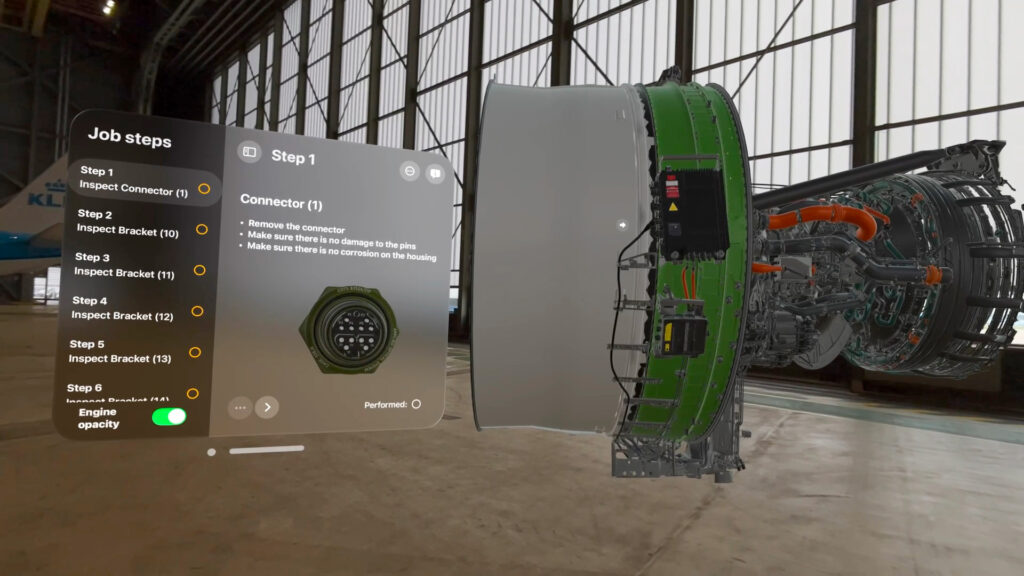Introduction: The Dawn of Spatial Computing
In June 2023, Apple introduced the world to the Apple Vision Pro, a mixed reality (MR) headset that promises to redefine how we interact with technology. Marketed as a “spatial computer,” this device blends augmented reality (AR) and virtual reality (VR), making it a powerful contender in the growing mixed reality space. Vision Pro represents not just another VR headset but a significant leap into a future where our digital and physical worlds converge more seamlessly than ever before.
As Apple envisions it, the Vision Pro will revolutionize industries such as entertainment, productivity, and content creation. But with a price tag of $3,499, is it worth the investment? In this detailed article, we’ll dive into the design, performance, feedback, and future implications of the Vision Pro, giving you an in-depth understanding of how Apple’s newest device is paving the way for the next generation of spatial computing.
Vision Pro’s Design: Premium Build with Practical Concerns
Apple is well-known for its attention to detail, and the Vision Pro is no exception. At first glance, it boasts a sleek and modern design with high-end materials that scream premium. The front is made of laminated glass that gently curves, enveloping the device’s micro-OLED displays. These displays offer an incredibly sharp resolution of over 23 million pixels, delivering one of the most advanced visual experiences in the MR market today.

- Customizable Fit
One of the standout features of the Vision Pro is its magnetic Light Seal, designed to create a snug fit around the user’s face. The Light Seal is available in various sizes, ensuring that users of different face shapes can find a comfortable fit. Early testers have reported that this snug fit is crucial to preventing light leakage and maintaining display clarity. However, despite the ergonomic design, several users have commented on the weight of the device. At around 600-650 grams, the Vision Pro is heavier than most other headsets, and while the Dual Loop Band helps distribute the weight more evenly, some users have noted discomfort during extended use. - Flexible Modularity
Apple’s approach to comfort doesn’t stop there. The Vision Pro also features a modular headband system. The primary band, made from braided fabric, fits snugly around the back of the head. It’s easy to adjust, thanks to an intuitive tightening dial, ensuring a customizable fit. Additionally, Apple includes a secondary head strap that loops over the top of the head for added support. This flexibility in design is part of Apple’s ongoing commitment to user-centric engineering, ensuring that each wearer experiences a tailored fit.
Display Technology: Visuals Beyond Expectations

At the heart of the Vision Pro experience lies its micro-OLED displays, each with a resolution far surpassing any VR headset on the market. Apple claims that the device features more pixels than a 4K TV, offering an unparalleled visual experience. This results in vibrant colours, razor-sharp details, and seamless immersion into the virtual or augmented worlds.
- Pass-through AR: A Window to Reality
The Vision Pro’s pass-through technology is one of the most impressive aspects of the device. Unlike most VR headsets, which create a grainy or pixelated representation of the outside world, Apple’s pass-through AR feels almost like looking through a window. The clarity and depth of field are so advanced that the transition between AR and VR modes is practically seamless, which makes multitasking—switching between your real and digital environments—effortless.
his is especially critical in professional environments, where users may need to blend real-world objects with digital overlays, such as viewing a 3D model of a product in AR while maintaining situational awareness. In early demos, users have raved about the ability to pull up virtual displays in a real-world environment, expanding their workspaces beyond the confines of a physical monitor.
Control System: A New Standard for Gesture-based Navigation
Unlike traditional input systems that rely on physical controls, the Vision Pro is controlled primarily through gesture, eye movement, and voice commands. Users can navigate the interface by simply looking at icons, while a subtle pinch of the fingers activates selections. This is made possible by the Vision Pro’s array of cameras and sensors, which track the user’s hand movements and eye positions with impressive accuracy.
The Vision Pro uses infrared cameras and LiDAR sensors to map the user’s surroundings and detect gestures in real time. The lack of physical controllers may seem jarring at first, but testers have praised the intuitive nature of the system. Even actions like scrolling through windows or interacting with apps felt natural after just a few minutes of use.
Apple has also included a Digital Crown, a physical control borrowed from the Apple Watch. This small dial allows users to adjust their level of immersion, quickly transitioning between fully immersive VR content and partially immersive AR environments.
Performance and Hardware: Powering the Future of MR
The Vision Pro is powered by the M2 chip, Apple’s cutting-edge processor, which drives the device’s computational power. It also incorporates a secondary R1 chip designed to process inputs from the Vision Pro’s cameras and sensors with minimal latency. This combination ensures a fluid, lag-free experience, essential for maintaining immersion in MR environments.
Battery Life and Portability
One area where Apple has faced criticism is the battery life. The Vision Pro comes with an external battery pack, offering around two hours of use on a single charge. While this external battery helps reduce the headset’s overall weight, some users have found it cumbersome to manage a separate battery unit. Given that mixed reality applications, especially professional or creative tasks, can easily stretch beyond two hours, many users may find themselves tethered to a power outlet for extended sessions.
Public Feedback: A Divisive Experience
Since its unveiling, the Vision Pro has garnered a wide range of reactions. For many tech enthusiasts, the device represents the pinnacle of MR technology, offering a glimpse into the future of computing. Early testers have praised its visual fidelity, intuitive controls, and the immersive nature of its display technology.
However, there are valid concerns about its price and practicality. At $3,499, the Vision Pro is significantly more expensive than competing headsets such as the Meta Quest Pro or Valve Index. This high price point has raised questions about who the Vision Pro is for—especially given that early adopters are more likely to be developers or enterprise users than casual consumers.
Moreover, despite its ergonomic features, the device’s weight and external battery pack have been points of contention among reviewers. Some users have also expressed discomfort with wearing the headset for long periods, which could be a hurdle for widespread adoption.
Application and Use Cases: Beyond Gaming

Apple has made it clear that the Vision Pro is not just a gaming device but a tool for content creation, collaboration, and productivity. In fact, Apple has been keen to position the Vision Pro as a spatial computer rather than a simple VR headset. The device’s ability to handle 3D design, virtual collaboration, and multitasking in mixed reality environments sets it apart from competitors.
Entertainment and Media
One of the key use cases for the Vision Pro will undoubtedly be in the entertainment sector. With the ability to display 3D content, users can immerse themselves in movies, games, and 360-degree videos in ways previously unimaginable. Additionally, the device’s spatial audio technology delivers a more immersive audio experience, ensuring that sound moves naturally within the user’s environment.
Apple has also introduced features like spatial photo and video capture, allowing users to relive memories in 3D. This could open new possibilities for personal content creation, from capturing immersive family moments to creating professional 3D videos.
Productivity and Collaboration
In professional settings, the Vision Pro has the potential to revolutionize remote collaboration. Imagine participating in a virtual meeting where 3D models of a product can be manipulated and examined by team members in real time. Apple’s FaceTime Personas—realistic 3D avatars of users—allow for more immersive virtual interactions, although the early versions of these avatars have received mixed reviews for their uncanny appearance.
Another exciting feature is the Vision Pro’s ability to extend your workspace beyond traditional screens. Users can pull up multiple virtual windows and arrange them in their physical environment, creating a workspace limited only by the size of the room they’re in. This offers immense possibilities for multitasking, especially for users in creative fields like design, video editing, and coding.
The Future of Apple Vision Pro: What Lies Ahead?
While the Vision Pro has introduced many exciting features, the device is still in its early stages, and future updates will likely address some of the concerns raised by early adopters. Apple’s extensive ecosystem of developers is expected to expand the Vision Pro’s capabilities, with third-party applications set to unlock new use cases.
Looking ahead, the Vision Pro could play a key role in Apple’s broader vision for augmented and virtual reality. As more industries adopt MR technology, the Vision Pro could become the go-to device for professionals looking to blend their digital and physical workflows.
Conclusion: A Bold Step Forward in Mixed Reality

The Apple Vision Pro marks a pivotal moment in the evolution of mixed reality, offering a cutting-edge fusion of augmented reality (AR) and virtual reality (VR) within a single, powerful device. While it may carry a steep price tag and some limitations such as its weight and battery life, Apple has undoubtedly set a new benchmark for immersive technology.
From its ultra-high resolution displays to its gesture-based navigation and pass-through AR technology, the Vision Pro is aimed squarely at tech enthusiasts, content creators, and professionals looking for an advanced tool that can blur the line between the physical and digital worlds. With a robust ecosystem already in place and the promise of future updates and applications, the Vision Pro is poised to be more than just a premium gadget—it could shape the future of how we interact with the digital world.
For now, the Vision Pro is likely to appeal most to early adopters and developers willing to embrace its capabilities. But as the MR market matures and Apple refines the device, it could become a more mainstream tool for productivity, creativity, and entertainment, defining the next era of spatial computing.
In short, the Apple Vision Pro offers a glimpse into the future of immersive tech—one where spatial computing could soon become as integral to our lives as the smartphone.